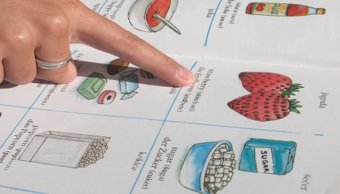 When a child has a learning disorder, it simply means the child’s brain processes information in a different way from “normal” people. For such children, growing up and adjusting to society becomes difficult. They need to be trained in a special way, and that’s best begun during early childhood, continuing on to adulthood.
When a child has a learning disorder, it simply means the child’s brain processes information in a different way from “normal” people. For such children, growing up and adjusting to society becomes difficult. They need to be trained in a special way, and that’s best begun during early childhood, continuing on to adulthood.
Learning disorders are actually common. As a parent, you need to watch out for signs that your child has a learning disorder, so you can provide the proper training and loving care he or she deserves early on.
Attention Deficit Hyperactivity Disorder (ADHD)
Children with this disorder display hyperactivity or restlessness, act with extreme impulsiveness, and have great difficulty focusing their attention on anything. ADHD affects about 3% to 5% of children worldwide. Some kids may exhibit all three symptoms, while others may have one or two predominating symptoms. Traditional schoolwork becomes difficult, because these require the focus they lack.
If your child has been diagnosed with ADHD, management of this disorder will professional counseling, applied behavior analysis, and some prescribed medication. It also involves personal lifestyle changes that a parent must make. Try setting up a consistent schedule of activities for your child, with detailed instructions, expectations, and limitations. This will help your child learn to organize thoughts and activities more efficiently.
Dyslexia
 Generally speaking, this is an impaired ability to read. Dyslexic people’s brains are not “wired” for quickly recognizing and associating visual symbols (i.e., letters and written words) with their corresponding spoken sounds or words.
Generally speaking, this is an impaired ability to read. Dyslexic people’s brains are not “wired” for quickly recognizing and associating visual symbols (i.e., letters and written words) with their corresponding spoken sounds or words.
Children with dyslexia also experience difficulty in writing and expressing themselves through speech. But there are ways of coping with this condition. If your child has been diagnosed with dyslexia, there are trained tutors you can hire who use special teaching techniques and aids which tap into multi-dimensional or multi-sensory thinking. At home, provide your child with loving encouragement. As soon as the child learns to read, try to include bedtime storybook reading into your bonding time. Encourage the child to engage in other hobbies or activities that will bring out his or her other talents, as well.
Dysgraphia
Somewhat similar to dyslexia, this is difficulty with the physical act of writing (manifested through extremely bad handwriting). Dysgraphia is sometimes also accompanied with the inability to comprehend and expressing thoughts in written form.
As with dyslexia, provide your child with the proper professional training to help him or her deal with his disability. Provide loving encouragement alongside regular writing practice at home.
Dyspraxia
This is a gross disability in physical movement and coordination. This usually visibly affects balance, action sequencing, walking activities, sensitivity to touch, and even coordinating speech with breathing or eating. Sometimes dyspraxics also have ADHD.
Occupational and physical therapists can intervene by regularly training your child to coordinate movements. The key here is to start early on in life, as soon as your child is diagnosed with this disorder.
Dyscalculia
The least troublesome of the learning disorders, this is the inability to understand math. It also includes impairment in associated skills, such as visual sequencing, organization, or memory.
If your child suffers from this, there are forms of educational therapy you can employ, including special teaching software. Make sure your child’s teachers are aware of your child’s special needs in math lessons.






